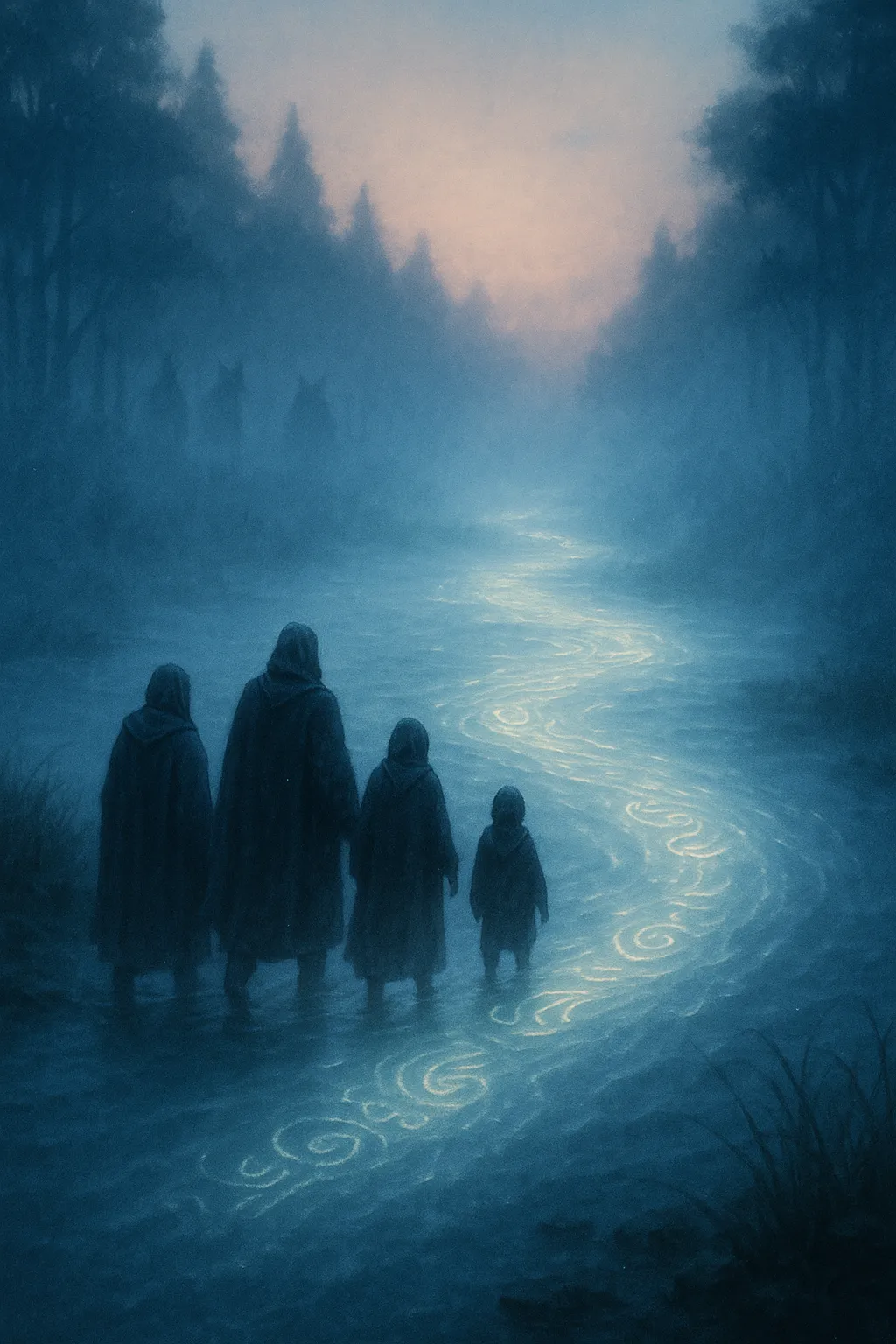
The First Trail of Tears, Remembered
I write this with a steady breath and an open palm to history. The ground under our feet remembers. Rivers remember. Names remember. In The Shifting Ground universe, remembrance is not a metaphor. It is a current that moves through land and lineage. The Trail of Tears is one such current. It runs through American memory and through our mythic river that guards a hidden Way Home. Both truths sit side by side. Both matter.
What the phrase “Trail of Tears” names
The phrase “Trail of Tears” names a series of forced removals in the eighteen thirties and eighteen forties. Indigenous nations of the Southeast were driven from their homelands to lands west of the Mississippi. The Cherokee. The Muscogee, also called Creek. The Seminole. The Chickasaw. The Choctaw. These removals are remembered today as one history with many routes and many griefs.Oklahoma Historical Society | OHS
Policy and pressure
Congress passed the Indian Removal Act on May 28, 1830. The law empowered the President to negotiate removal treaties with tribes east of the Mississippi, setting federal force behind dispossession and relocation. National ArchivesPieces of History
The first large removal: Choctaw, 1831
The Choctaw were the first of the southeastern nations to be removed under the Act, beginning in 1831. Thousands died from starvation, exposure, and disease on the more than 500-mile journey, a suffering remembered as “a trail of tears and death.” National Library of MedicineHISTORY
Today, the Choctaw Nation in Oklahoma traces this removal history and its continuing remembrance practices. National Park ServiceChoctaw Nation of Oklahoma
Other nations forced west
Between 1830 and 1850, about 100,000 Indigenous people across the region were driven west by coerced treaties and military force. The Muscogee (Creek), Chickasaw, and Seminole endured removals marked by chains, illness, and high mortality; estimates for the Creeks alone are in the thousands. National Park Service
Cherokee removal, 1838–1839
In 1838, U.S. troops under Gen. Winfield Scott forced more than 16,000 Cherokee from their homes into camps and then west in 17 detachments along land and water routes. Contemporary accounts estimate that about 4,000 Cherokee died during the ordeal. Today the National Park Service marks roughly 2,200 miles of routes across nine states. National Park Service+3National Park Service+3National Park Service+3
Memory and survivance
These events are preserved and retold by tribal nations, museums, and community programs. The National Museum of the American Indian offers classroom resources that center Native perspectives on removal and resistance. The Cherokee Nation’s Remember the Removal program teaches history through a living journey that retraces portions of the route. Elders and youth pass stories forward so that memory becomes strength.National Museum of the American Indian+1Cherokee Nation Website
How this history lives inside The Shifting Ground
In our world setting, the Trail of Tears is also a river of spirit. A guarded waterway, hidden in plain sight, that knows how to carry the worthy toward refuge. In the lore, it is a mystical corridor that once opened during the forced migrations. It could be found by those who listened to the land and to the ancestors. It led toward a sanctuary we call the Mother’s Womb.
Read Part 1: The River That Remembers to experience the TSG mythic retelling that honors this history through the river’s guarded “Way Home.”
Why remembrance matters
Remembrance is not the end of grief. It is the beginning of belonging. When we speak the names of nations. When we mark the routes. When we listen to what the land endured. We become witnesses. In The Shifting Ground we carry that witness forward through characters who must face the cost of protection, the price of power, and the long work of repair. The river remembers. So must we.
Where to learn more
Trail of Tears National Historic Trail. History, maps, and route sites across nine states. National Park Service+1
National Museum of the American Indian. Classroom resources on removal and Cherokee resilience. americanindian.si.edu
Cherokee Nation. Remember the Removal program and rider stories. cherokee.org+1
Oklahoma Historical Society entry on the Trail of Tears. Overview of the term and its use. Oklahoma Historical Society
National Archives. Indian Removal Act context and primary documents. prologue.blogs.archives.gov+1
National Library of Medicine timeline entries on Choctaw removal and Cherokee deaths. nlm.nih.gov+1
Read Part 1: The River That Remembers
Begin the mythic retelling that honors this history through the river’s guarded Way Home. In our canon, the Trail of Tears waterway is a living threshold that tests intention and offers passage toward the Mother’s Womb for those the land chooses.
Author’s note: This piece is part of our ongoing series that braids verifiable history with the spiritual architecture of The Shifting Ground. The history stands on its own. The lore bows to it, listens to it, and seeks to carry it with care.
